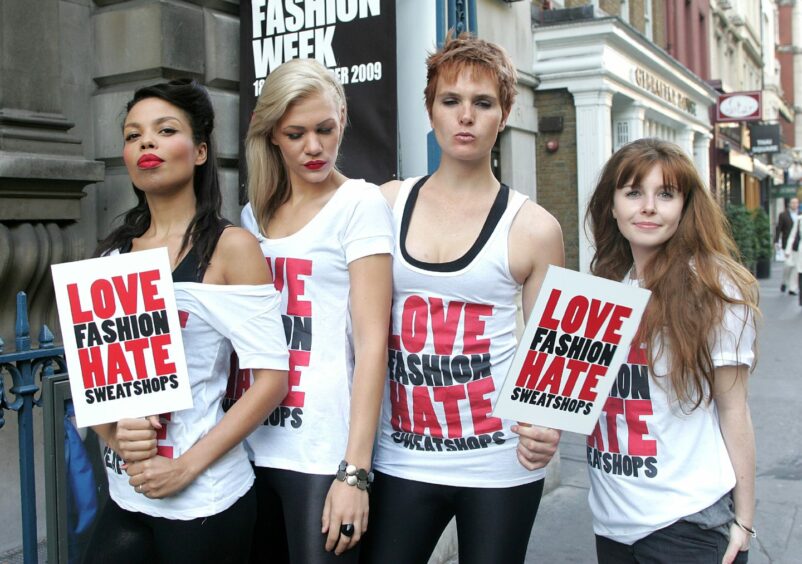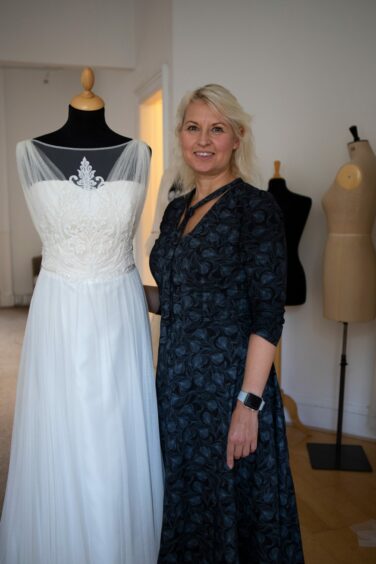
Independent designers and artists are increasingly having their work ripped-off by big brands and stores, according to a leading campaigning organisation.
The rise of online fast fashion and complex design laws are contributing to the growing worldwide issue, which has seen the likes of Zara, Cos, Marks and Spencer, Aldi and e-commerce giant Shein accused of copying the work of others without credit, permission or pay.
Dids Macdonald, chief executive of Anti Copying in Design (Acid), which campaigns on design law and intellectual property (IP) reform, says design theft is an increasing problem as retailers “fast track” products to market to meet the demand for cheap, disposable clothing.
“There’s an awful lot of small creative businesses, whether it’s fashion or product designers, that are basically the Davids of this world against the Goliaths,” she said. “The Goliaths take the first step to market through theft – a lot of people call it IP infringement, but it’s just a sanitised word for theft. It is a huge and increasing problem.
“We’ve had issues on behalf of our members against the very well-known names. We have been campaigning for a change in the law, and we succeeded in 2015 with the introduction of criminal provisions for intentional registered design infringement.
“However, because the majority of UK designers rely on unregistered designs, there still isn’t that big deterrent factor. Small designers really are the prey of some unscrupulous behemoth retailers and manufacturers.”
Unable to pursue legal action due to time and cost concerns, many designers have used social media to highlight when their designs have been replicated by larger brands, posting side-by-side comparisons of their work and the often cheaper copy.
Macdonald continued: “Design law, unfortunately, is still very complicated both in the UK and Scotland, so it’s very difficult for designers to navigate. It’s still cost and time prohibitive to take legal action, so many people are going to social media to tell their stories, naming and shaming.
“But they have to be very careful about not saying something that could be libellous or against the law, and people have also got to be aware of making groundless threats.”
It’s not just small business that are calling out brands for IP infringement. In November, graffiti artist Banksy accused clothing retailer Guess of using his designs without permission in their new “inspired by Banksy’s Graffiti” capsule collection.
Posting a photo of the American brand’s Regent Street store to Instagram captioned “Attention all shoplifters,” the anonymous artist said, “They’ve helped themselves to my artwork without asking, how can it be wrong for you to do the same to their clothes?”.
Having spent more than two decades lobbying the government to support UK designers, Macdonald believes the problem is only getting worse as brands face pressure to be first to market with trending looks.
“We’ve found that the UK retailers or manufacturers will see what’s the most innovative product on the market, check whether it’s had its success in a very small way, and then send it out to China, where it’s replicated and brought into this country and other European outlets,” said Macdonald, the co-founder of Acid, who had her own design products consistently copied in the 1990s.
“One thing that we have found is that some of the major brands are very frightened of reputational damage. In the case of Guess, for example, they put blackouts on their windows, and in a recent case against Aldi, they tried to put in place damage limitation.”
Far from being unique to the fashion industry, Macdonald has helped everyone from furniture and jewellery designers to toy makers to make claims against retailers who have sold unlicensed versions of their work. She highlights the case of the Wales-based business Triclimb, who believe their Pikler triangle climbing frame was replicated by Aldi.
Aldi withdrew the item from its stores, but said: “Wooden climbing frames such as this are widely available in the market.”
Macdonald added: “Aldi took not only the name of the company, but they stole the registered design. The designer was in correspondence for nearly a year with them, and it nearly broke her. She had to lay off people in the factory, and was left with half a million pounds of stock left in warehouses. Apart from anything else, the saddest thing was when she said to me, ‘Honestly, I’m so disillusioned, I really don’t want to design anymore’.
“That is just one of hundreds of stories I could tell you. It’s an insidious culture.”
‘I make one-off designer bridal dresses then see cheap copies on sale for £20’
Award-winning dressmaker Mette Baillie designs bespoke wedding dresses and mother of the bride outfits, which take months of work to bring to life.
Yet, with a quick Google search, she can find her designs advertised on dodgy e-commerce sites for as little as £20.
The Edinburgh-based designer, who trades under Freja Designer Dressmaking, says she finds copies of her dresses for sale at least a couple of times a year, with many unscrupulous retailers even using her own photography as illustration.
“I make one-off dresses so I don’t register each design, but the work still belongs to me as an unregistered designer for three years,” explained Baillie, who is originally from Denmark and set up her business in 1999. “Most of my marketing is done through social media, and I enjoy a lot of traffic, particularly on my Pinterest page, where some months I get more than 10,000 views – this is where most thefts have taken place.”
Often, after contacting the social media website or online retailer, products are taken down within 24 hours, but other times she simply receives no reply – if she can even find an email or postal address to contact.
“I recently found one of my brides featured on the front page of a Spanish online magazine, which was distributed to thousands of readers. I would have been flattered if they had just asked for my permission and credited me, but they just took the photographs without asking. I also found the same bride’s dress advertised on a couple of Chinese websites, which I eventually managed to have stopped. They have probably been taken down by credit card companies or similar, as those types of companies are flighty.
“I know of many businesses that have had designs and even entire websites stolen, so I am far from alone – many people are in the same or worse situation than I am.”
Although it’s upsetting to have her designs stolen and falsely advertised, Baillie says one of the wider issues is that cheap brands encourage consumers to believe clothing can be made for such low prices so it’s important to educate the customer.
“People will see these dresses advertised online and think, ‘£20? Oh maybe that’s not quite right’ but it still distorts their view of the real value,” she explained. “I am a couture designer, I can’t make a dress for £80, but those kinds of adverts make people think it is achievable.
“The same fit, details and design can never be achieved with a mass-produced polyester dress from a sweatshop.”

Enjoy the convenience of having The Sunday Post delivered as a digital ePaper straight to your smartphone, tablet or computer.
Subscribe for only £5.49 a month and enjoy all the benefits of the printed paper as a digital replica.
Subscribe © Tony Kyriacou/Shutterstock
© Tony Kyriacou/Shutterstock © Beth Mollison
© Beth Mollison